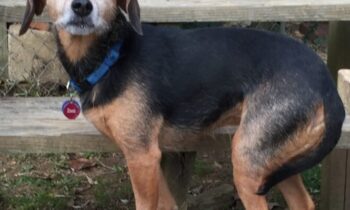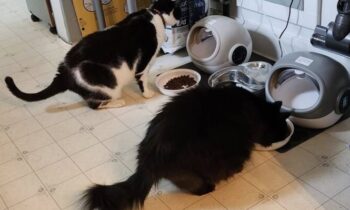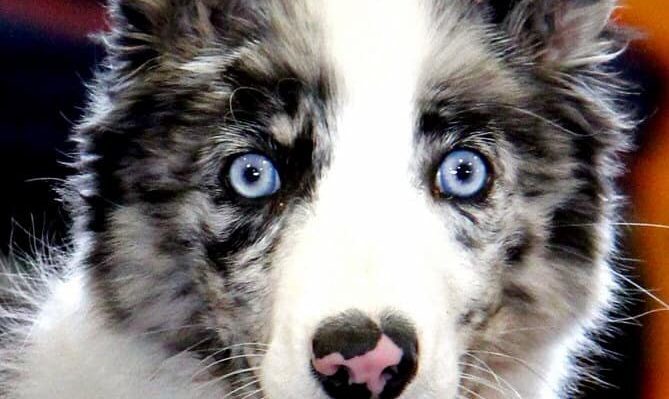
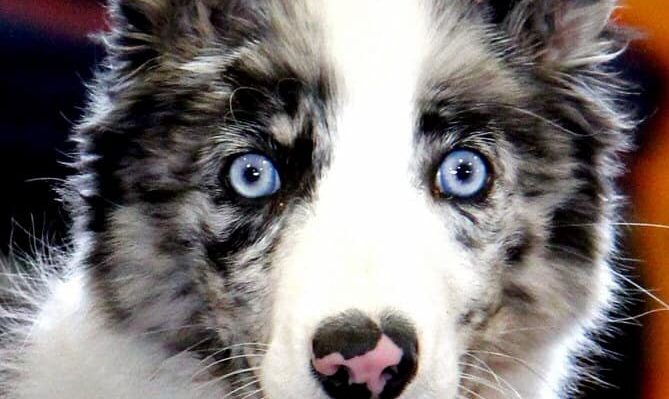

Last week, we covered what you should do before you get a puppy.
This week, we’ll go through what you’ll buy before you get a puppy.
(Not including the puppy.)
I don’t see many items in this week’s list that are optional, but you can certainly borrow the things that would quickly be outgrown, like puppy collars, and search out less expensive choices—like shopping at yard sales instead of buying everything new. Invest the most money in equipment that will last a dog’s lifetime, like crates. Consider spending less money on “luxury” items that a puppy might destroy . . . like a fancy bed. (I hold off on purchasing “fancy beds” until I know a pup is fully through with destructive chewing, usually sometime around the pup’s first birthday.)
What Puppy Needs to Wear
Flat Buckle Collar
Puppy collars should not be fancy or expensive. Borrow a succession of sizes from friends or relatives who’ve raised puppies recently, switching to the next length up as soon as the collar becomes snug on the pup.
Avoid using a too-long collar with inches hanging loose after it’s buckled. With that attractive nuisance bobbing off his neck, your puppy will be tempted to chew on it, and collar chewing is not a habit you want your pup to find enjoyable.
Nylon or another synthetic is probably a good choice—affordable, available, and, very importantly, washable. Leather is probably not as wise a choice. Save the investment in a good leather collar for when your pup is full grown!
Six-Foot Leash
You probably will want a leather leash when your dog is an adult, if she hasn’t developed a leather-chewing habit . . . but please wait until she’s past the puppy stage to purchase said leash, will you?
Otherwise, you’ll not only have to find a way to deal with a puppy who wants to chew on leather while the leash is attached to her collar, but you’ll also have to remember to put the leather leash out of the puppy’s reach whenever it is not attached to her collar. Fail at either assignment and you’ll have a leash that’s too chewed up to be usable, plus you’ll be mad at your pup and at yourself for the loss.
For puppyhood, find a less expensive, less enticing material, in a leash style that suits your hands (too wide is often an issue for humans with smaller hands)—one that is comfortable to use wet or dry.
Long Line
Cotton or synthetic webbing can be a good choice. For a puppy, a 20-foot long line is probably a good length, especially if the humans who’ll be handling it have no long-line experience. There certainly are tricks to keeping a long line from tangling up and you’ll learn those tricks by experimentation as you use it. Better yet, ask a friend or family member to “be the dog,” attach the long line to that human (clip it onto a belt), and practice to your heart’s content without involving your real dog!
Most importantly, do not ever use a flexible/retractable lead on your dog or puppy. Flex leads are horribly dangerous, both to dogs and to humans. To see why, Google “flexible leash injuries.”
Identification Tags
Your puppy may not be required to be licensed where you live until he has reached a certain age, but he’s very much at risk of being lost long before he’s old enough to need a license. That’s why you should put some sort of ID tag on his collar even though he doesn’t have a license yet.
You can usually find a machine that “prints” on plastic or metal tags at most corporate pet-supply stores.
▪ Don’t include your puppy’s name. That only makes it easier for someone to steal him.
▪ Do include your contact numbers so, if someone finds your pup, he can be returned to you without going through Animal Control.
▪ Add your puppy’s license, microchip, and rabies tags to his collar as he gets them.
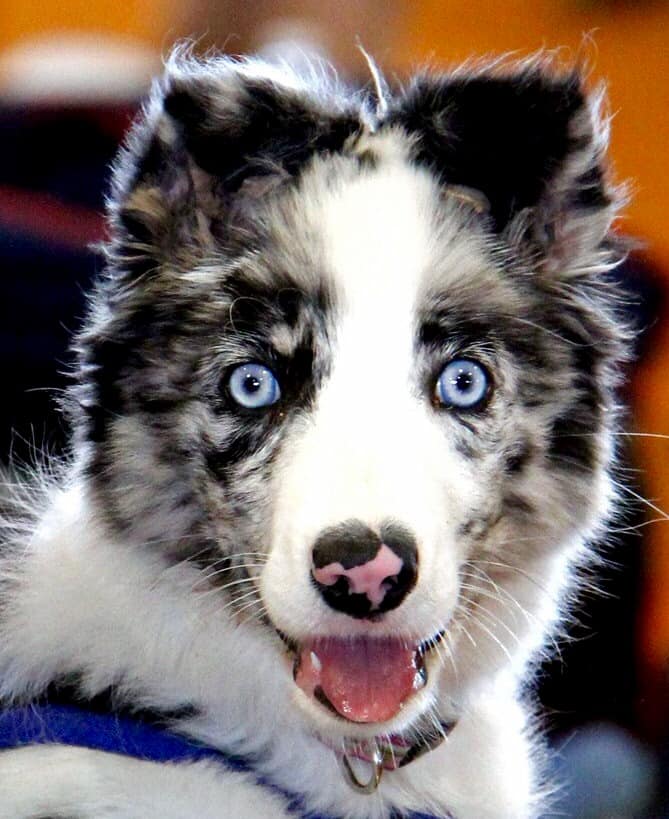

Photo by Gayle York
What Puppy Needs To Use
Food and Water Bowls
Stainless steel seems to be a good choice all around. I recommend stainless-steel bowls with rubber or plastic on the bottom, to keep the bowls from sliding on surfaces when pup is eating or drinking. Plastic bowls may be cheaper, but they don’t last . . . and puppies chew on them.
▪ Pet bowls should be dishwasher proof.
▪ You may start out with smaller bowls for your puppy until he gets bigger, but it’s certainly not mandatory.
▪ To avoid your puppy’s being frightened by the tags on his collar bumping against the bowls as he eats or drinks, use tape around the tags or enclose them in a commercially available “tag cover” of fabric with velcro closures, sold at most pet-supply stores.
Food
Did you get your puppy from a breeder or rescue? Find out what he’s been eating there and decide if you wish to continue to use that food when the puppy joins your family. Often, you’ll be given a sample amount to take with you when you bring the puppy home.
Ask your veterinarian at your well-puppy visit (before you take the puppy home) about foods, amounts, and feeding times, as those choices depend on your puppy’s condition at that first examination.
Don’t buy huge supplies of a food your puppy has never tried unless you’re able to return that big bag to the place you bought it. Yes, reputable pet-supply stores and pet-food manufacturers want you and your puppy to be happy with the food you’ve chosen, and they make it easy by gladly accepting returns for store credit.
Treats
Use pieces of her kibble as treats when you first bring your puppy home. Put a handful of kibble in a plastic baggie with a few splashes of water; shake the bag a few times to make sure all the kibble is slightly wet. Let it sit in the fridge for as long as it takes to soften up the kibble pieces. Soft kibble pieces should be easier for your young pup to swallow.
Once your puppy has settled into your home routine and you “get” how her digestive system works, you can experiment with the sort of treats that will be used in puppy class—tiny pieces of chicken or cheese, for example—to see what your puppy likes in training treats. Bigger treats like hard biscuits and KONGs full of goodies will be next!
Grooming Equipment
Start with the basics, appropriate to your puppy’s breed or mix—comb, brush, shampoo, nail clippers, toothbrush, toothpaste.
▪ Ask your puppy’s breeder or rescue group for advice on what equipment might work best and what brands or styles they’d recommend.
▪ Ask for suggestions from friends and relatives who have dogs with grooming needs similar to what your puppy’s will be.
▪ Ask your chosen groomer how to keep up grooming at home, and ask your chosen veterinarian how to brush your pup’s teeth.
▪ Ask your veterinarian or groomer to show you how dog nails should be trimmed.
▪ Ask your vet for a handout on dogs sprayed by skunks, buy ingredients enough to mix several skunk treatments, and keep those ingredients handy, along with the recipe for the treatment (just in case).
Crates for Car and Home
Your puppy will make his first trip with you—for a vet check-up and then home—in a crate. It’s the only safe way to transport him in a vehicle.
▪ Ideally, the crate he comes home in will be just big enough for him in his puppy size, for safety’s sake—not big enough for the size he will be full-grown.
▪ You can strap a small crate into place with seat belts in many vehicles, or you can use bungee cords to hold it firmly.
▪ Do not sit with the crate in your lap in the front seat or in any seat for which the airbag has not been turned off.
Being crated in a vehicle not only makes a puppy much safer than his being allowed to ride unrestrained, it also results in a much easier clean-up if puppy becomes sick or eliminates. When you get home, you can hose out the dirty kennel and return it to your still-clean car.
You need an appropriately-sized crate for in the house, too, of course. Housebreaking without the use of a crate can take forever! While your puppy is still small, you can probably get by with just one crate by carrying it to the car every time you take the pup with you, then returning it inside when you get home.
As your pup gets older, though, consider the convenience of having one crate that stays in your car and another crate that stays in your home. The bigger the crate, the less likely it’s going to be easy to haul it from pillar to post repeatedly! Shop at yard sales or thrift stores where you can find some deals on hardly used crates. You may find you can afford an extra . . . or two?
What Else?
▪ You’ll need poop bags. Lots of poop bags.
▪ You’ll need paper towels—so many paper towels!
▪ Clean-up equipment, sprays that disinfect and deodorize, first aid for yourself. A first-aid kit for a dog isn’t a bad idea, either!
▪ Collect old towels that you can bleach, old blankets that you can wash, instead of investing in expensive accessories and bedding while your pup is young. Save your money for when he’s older and has overcome any destructive puppy urges!
▪ Toys? YES!
You’re getting a puppy?
It will be a lot of work!
Doing it right is a good choice.
Will you tell us how it’s going?

